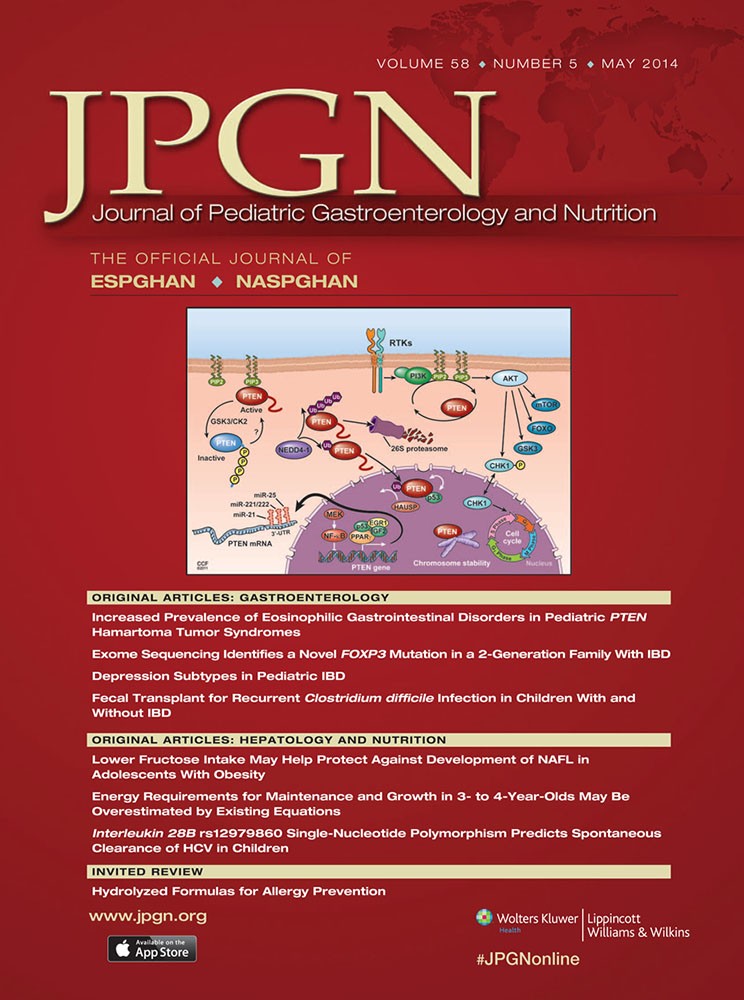Predictors of Depression in Youth With Crohn Disease
This project was supported by the National Institutes of Health through grant numbers UL1 RR024153 and UL1TR000005.
E.M.S. received funding from the National Institute of Mental Health (R01MH077770) and the NIH Director's Innovator Award (1DP2OD001210). J.G.C. was supported by a National Institute of Mental Health training grant (R25MH054318). A.B. has received consulting fees from Millenium, Dyax, Cubist, and Nutricia, lecture fees from Merck, and royalties from UpToDate. D.R.D. has received royalties from American Psychiatric Publishing Inc. E.M.S. is a paid advisor for Merck, has received payment for expert testimony in a malpractice case, has received payment from Imidex for speaking at a CCFA meeting, and receives royalties from American Psychiatric Publishing Inc. The other authors report no conflicts of interest.
ABSTRACT
Objective:
The aim of the study was to determine whether infliximab use and other potential predictors are associated with decreased prevalence and severity of depression in pediatric patients with Crohn disease (CD).
Methods:
A total of 550 (n = 550) youth ages 9 to 17 years with biopsy-confirmed CD were consecutively recruited as part of a multicenter randomized controlled trial. Out of the 550, 499 patients met study criteria and were included in the analysis. At recruitment, each subject and a parent completed the Children's Depression Inventory (CDI). A child or parent CDI score ≥ 12 was used to denote clinically significant depressive symptoms (CSDS). Child and parent CDI scores were summed to form total CDI (CDIT). Infliximab use, demographic information, steroid use, laboratory values, and Pediatric Crohn's Disease Activity Index (PCDAI) were collected as the potential predictors of depression. Univariate regression models were constructed to determine the relations among predictors, CSDS, and CDIT. Stepwise multivariate regression models were constructed to predict the relation between infliximab use and depression while controlling for other predictors of depression.
Results:
Infliximab use was not associated with a decreased proportion of CSDS and CDIT after adjusting for multiple comparisons. CSDS and CDIT were positively associated with PCDAI, erythrocyte sedimentation rate, and steroid dose (P < 0.01) and negatively associated with socioeconomic status (SES) (P < 0.001). In multivariate models, PCDAI and SES were the strongest predictors of depression.
Conclusions:
Disease activity and SES are significant predictors of depression in youth with Crohn disease.




